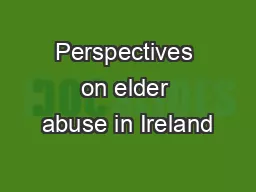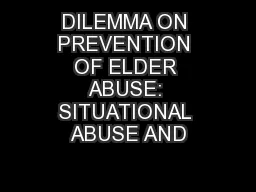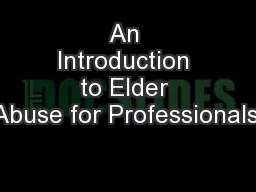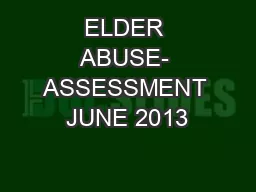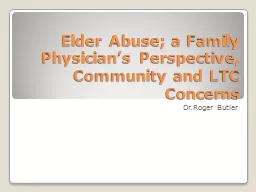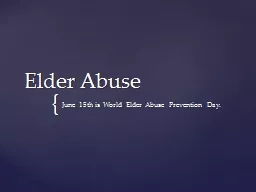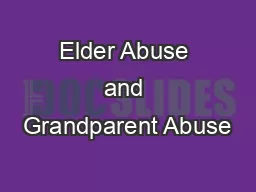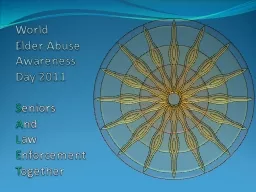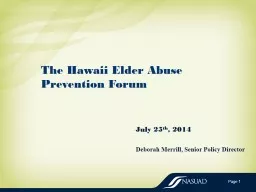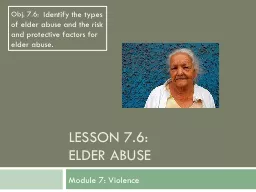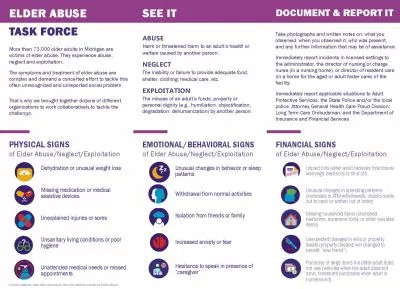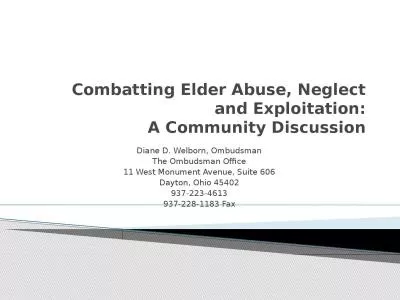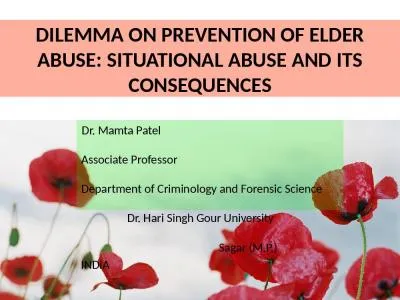PPT-Perspectives on elder abuse in Ireland
Author : karlyn-bohler | Published Date : 2017-12-23
Dr Amanda Phelan CoDirector National Centre for the Protection of Older People Amandaphelanucdie01 7166482 Irish Definition A single or repeated act or lack of action
Presentation Embed Code
Download Presentation
Download Presentation The PPT/PDF document "Perspectives on elder abuse in Ireland" is the property of its rightful owner. Permission is granted to download and print the materials on this website for personal, non-commercial use only, and to display it on your personal computer provided you do not modify the materials and that you retain all copyright notices contained in the materials. By downloading content from our website, you accept the terms of this agreement.
Perspectives on elder abuse in Ireland: Transcript
Download Rules Of Document
"Perspectives on elder abuse in Ireland"The content belongs to its owner. You may download and print it for personal use, without modification, and keep all copyright notices. By downloading, you agree to these terms.
Related Documents

